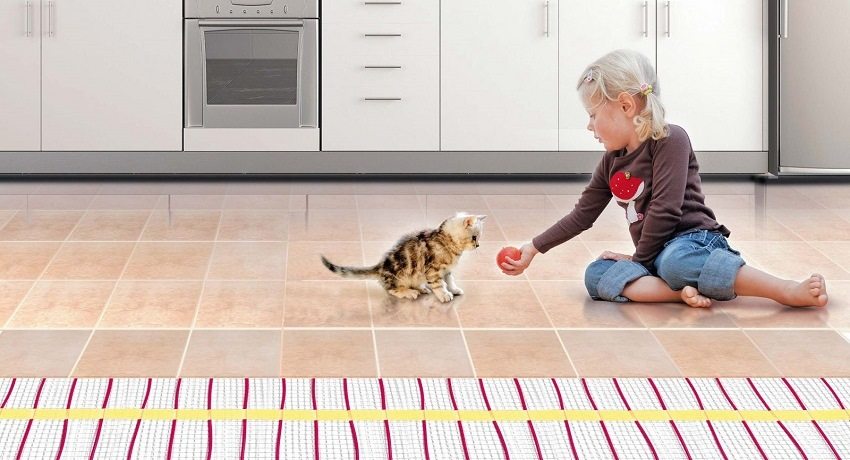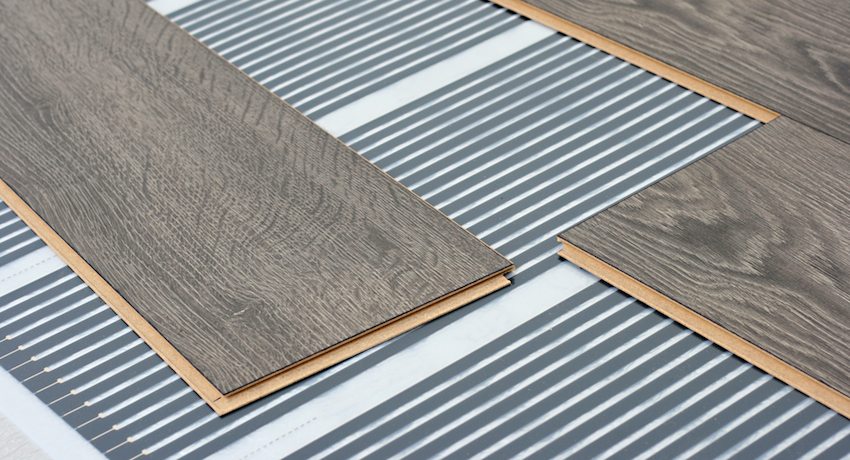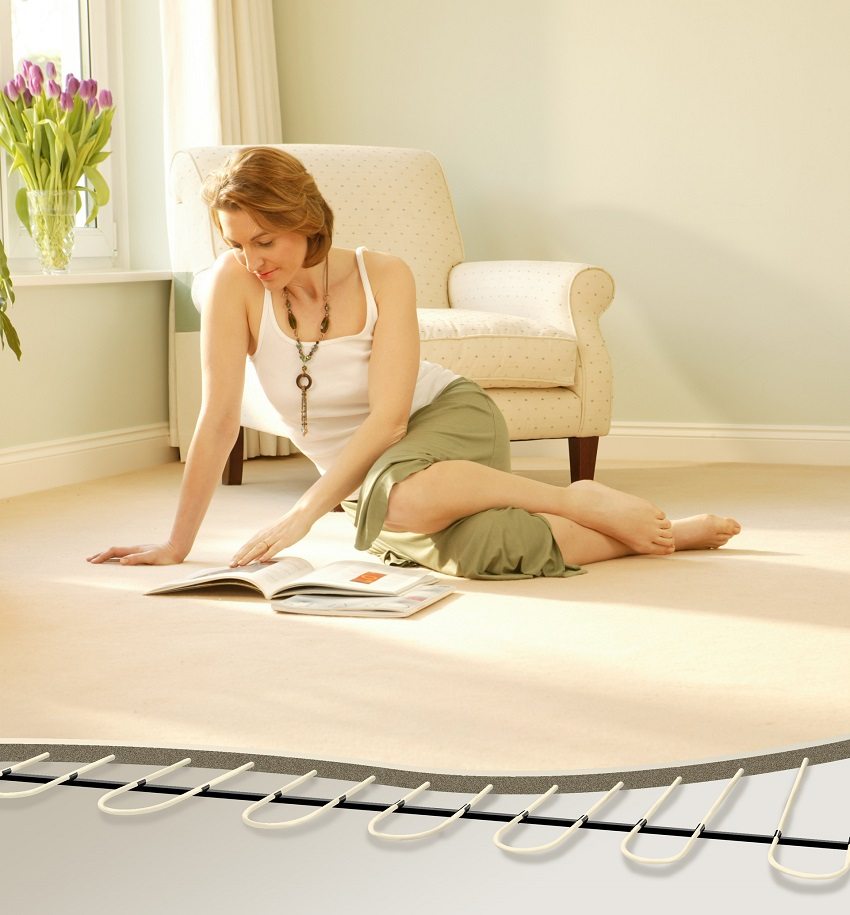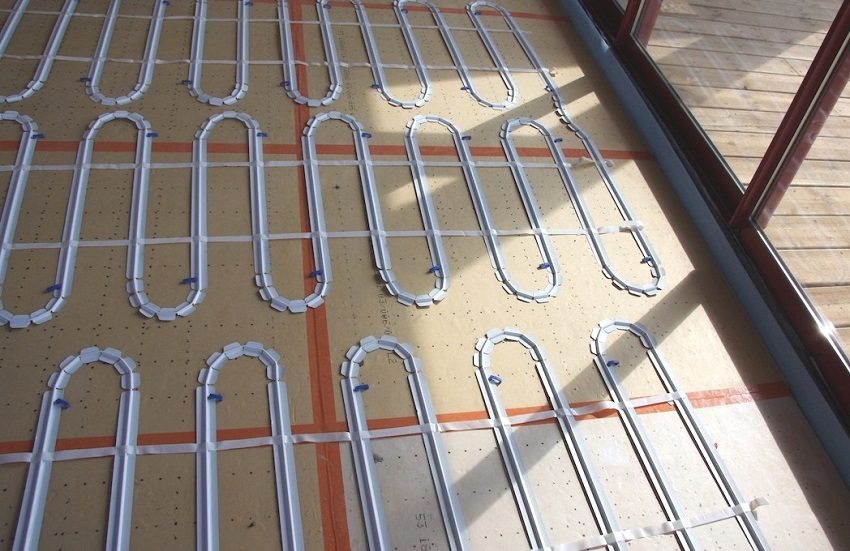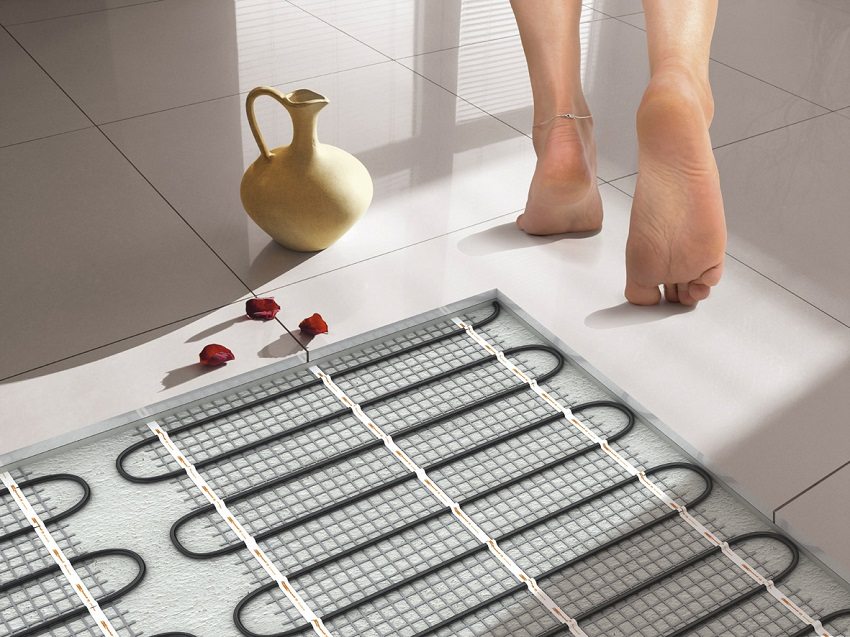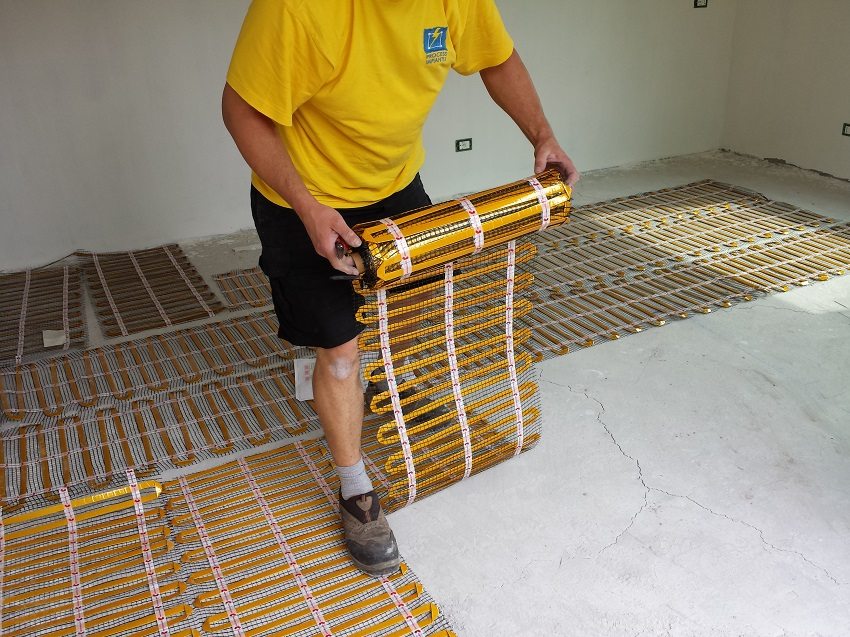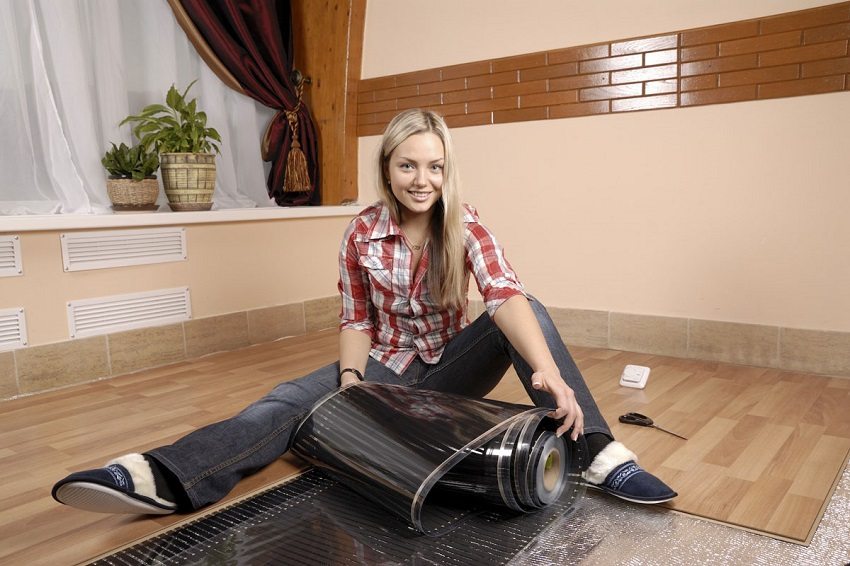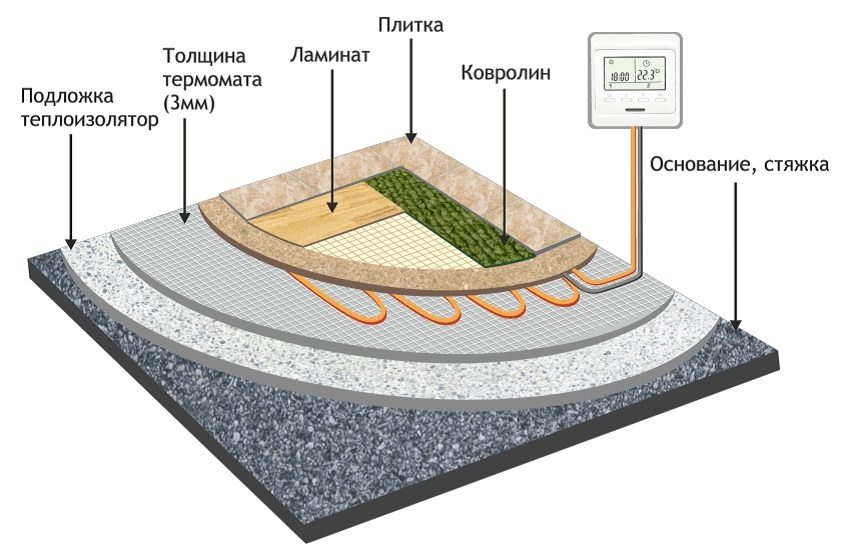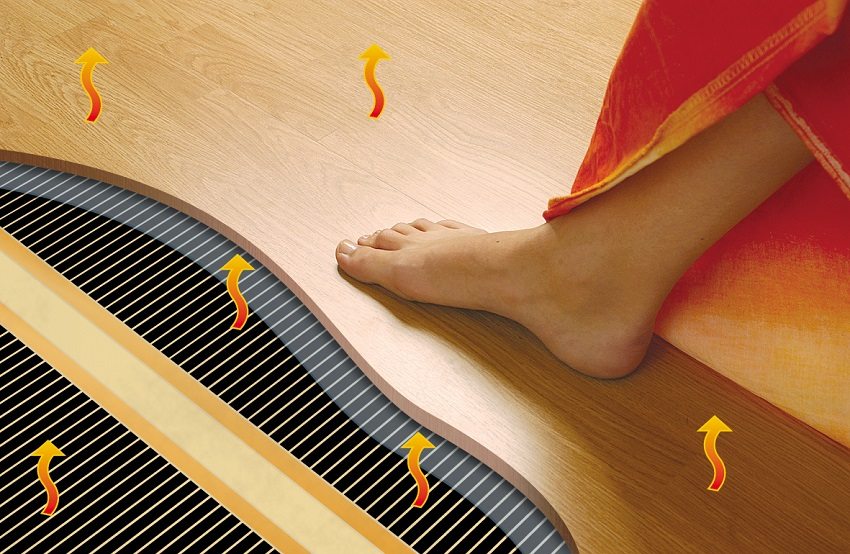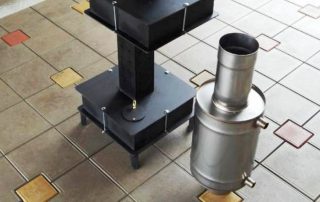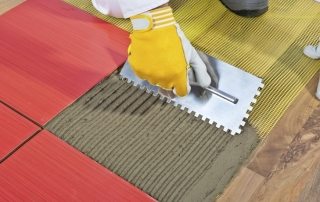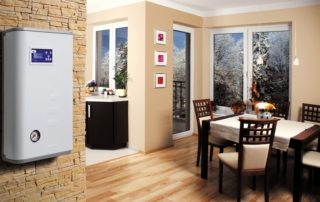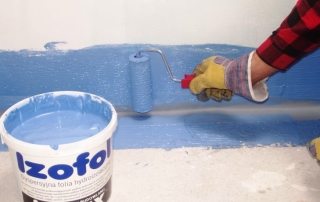Heating modern rooms with warm floors is an optimal and rather profitable solution. Therefore, manufacturers keep their finger on the pulse, introduce the latest developments to arrange a comfortable stay. Due to the wide variety of heating elements, the consumer constantly faces the question: how to choose warm electric floors for your home?
Content [Hide]
The main advantages of a warm floor
Conventional heating radiators often do not fully cope with their duty - to warm up the room. Their work is based on the principle of convection. The air heated at the level of the battery rises, leaving the bottom of the room cold. In the frosty season, a similar problem is fraught with colds.
Underfloor heating equipment will save you from problems with cold rooms and health. It provides a fairly high level of thermal comfort. Thanks to a wide range of thermal control functions, you can easily ensure the optimal temperature for a person.
Also, the advantages of such heating elements include:
- high reliability;
- noiselessness and stealth;
- saving space;
- uniform heating;
- long service life.
Everyone who has installed warm electric floors will have only positive reviews. It is much easier to install them than water ones, it is much easier to regulate the temperature. Depending on the flooring, you can choose the most suitable option for a particular room.
Varieties of modern electric floors
There are several options for the execution of heating floor structures. Each of them has its own characteristics, heating and installation methods. Warm elements can be done with:
- heating cable;
- heating mats;
- infrared film.
Each material is good in its own way and has some disadvantages. What type of underfloor heating is suitable for a particular room, you need to figure it out.
Useful advice! If in a private house it is possible to arrange a water heating system for the floor, then in apartments of multi-storey buildings it is allowed to use only an electric one.

Electrical device diagram underfloor heating under ceramic tiles
Heating cable
Such a heating system is quite simple to install, but it requires some skills.It is lightweight and easy to use, it allows you to effectively warm up the floor covering with minimal losses. Its installation includes the following steps:
- Insulation is laid on the first layer of the screed.
- The cable is attached to the mounting tape.
- After checking the operability of the heating structure, the second layer of screed 2-3 cm thick is poured.
- After the concrete has set, the topcoat is laid.
The cable system can be used as complete heating. But this heating method also has disadvantages. Installation requires special skills, if they are not there, it is worth using the services of an experienced master. You can use the finished floor no earlier than a month later, only after the concrete screed is completely dry.
Useful advice! In the area where there is furniture and kitchen equipment, the cable does not need to be laid.
Heating mats
When it is not planned to make the floor screed, thermomats can be purchased to equip the heating structure. Their principle of operation is the same, only the heating cable is located on the fiberglass mesh, and not in the screed. Installation of heating mats is very simple, they need to be rolled out around the room and plugged in, and then the topcoat is laid. You can connect them to each other using special connectors, which allows installation in any area.
One of the disadvantages of such a heating system is its low power, about 10 W / m. But this is what makes it possible to lay thermomats in a layer of glue under the tiles, as well as under the laminate without pouring a concrete screed.
Thermal film
Recently, among the existing methods of heating, the latest development has appeared - film construction with infrared radiation. It is sold in the form of a thin film, about 0.5 mm thick. Installation of such a heating system is also not a hassle. The structure must be insulated from moisture, therefore it is not used for wet installation of the floor covering.
This is the only type of floor heating that cannot be installed under tiles, but this technology works great under laminate, parquet or linoleum. Heating takes place thanks to infrared radiation. This method has a fairly high efficiency, about 20% more economical than its more common counterparts. Against the background of many positive properties, the film warm floor has one serious drawback - the service life of such a product is relatively low.
How to choose warm electric floors
What to look for when choosing electric underfloor heating? Which are better for tiles and which ones for laminate? Many similar questions arise before the owner, who decided to equip the room with additional heating. Let's try to figure out such subtleties.
In order not to be mistaken when choosing electrical heating systems, it is necessary to evaluate their technical characteristics. The most important parameter to look out for is power. If a heating cable is used for a room with normal humidity, then this figure can be in the range from 100 to 120 W / m². In this case, the power of the thermomat should be higher, approximately 160-180 W / m².
Thanks to the concrete screed, the floor with the cable system heats up much more and cools down much more slowly. Therefore, such an electric floor can be turned on less often and it will be much more economical. Having created certain conditions, carrying out additional ceiling insulation and walls, a system with a heating cable, if necessary, can be used as the only way to heat the entire room.
Useful advice! If it is planned to use underfloor heating as the main heating, then the heated area should be more than 80% of the total.
The answer to the question of which is the best electric heated floors for tiles is unambiguous. Ideal when arranging such a heating system is the use of a heating cable. But if there is no opportunity to perform a screed, it is convenient to use thermomats. Floor coverings such as linoleum, carpet, parquet or laminate can be easily laid on top of the heating structure and warm up perfectly.
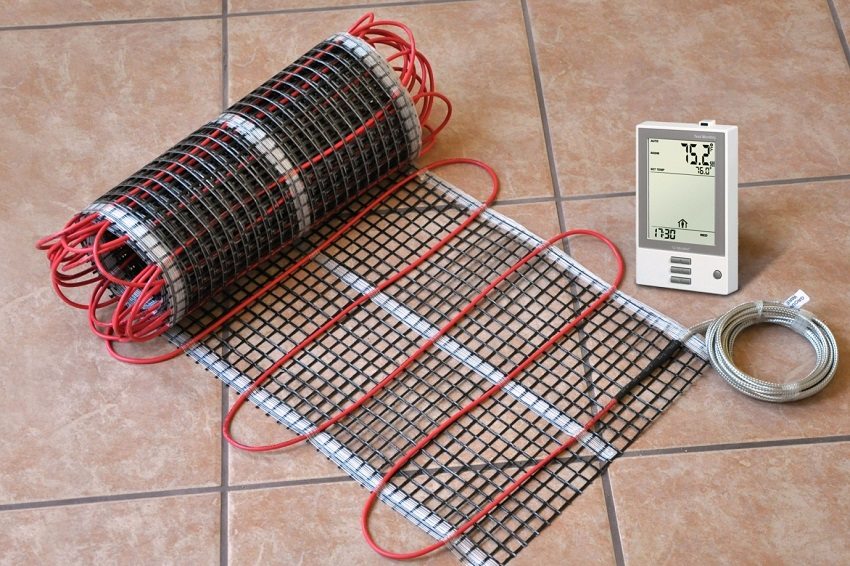
Electric underfloor heating are completed with temperature sensors for automatic regulation of heating temperature
Infrared films
It is worth opting for infrared floors if you want to get the optimal combination of high efficiency and fairly economical energy consumption. Just like heating mats, the thermal foil can be applied to any substrate and even to old floors. Due to the small thickness of the product, the height of the room is not reduced.
Thermal films, due to uniform heating, have proven themselves well when working with wooden coatings. Another advantage of infrared systems is their healing effect on the body. They are ideal for people with allergies as they do not carry dust particles due to the lack of convection.
Ease of use
How to choose warm electric floors is more or less clear. But it is worth paying attention to the additional equipment. The main device for controlling the electric floor is the thermostat. It is connected to special sensors that monitor the temperature and transmit signals. The simplest thermostat constantly maintains the same heating level, but there are also multifunctional options that provide:
- temperature control in the floor area;
- general room temperature control;
- automatic switching on and off the system.
With their help, you can program the operation of the heating structure at a specific time, on specific days of the week. Such systems independently control the indoor climate and do not require constant adjustment.
Warm electric floors, reviews of which are always positive, are becoming more widespread. Thanks to the ease of use and efficiency, they can significantly improve the quality of life and solve the problems with heating with heating for many years.
